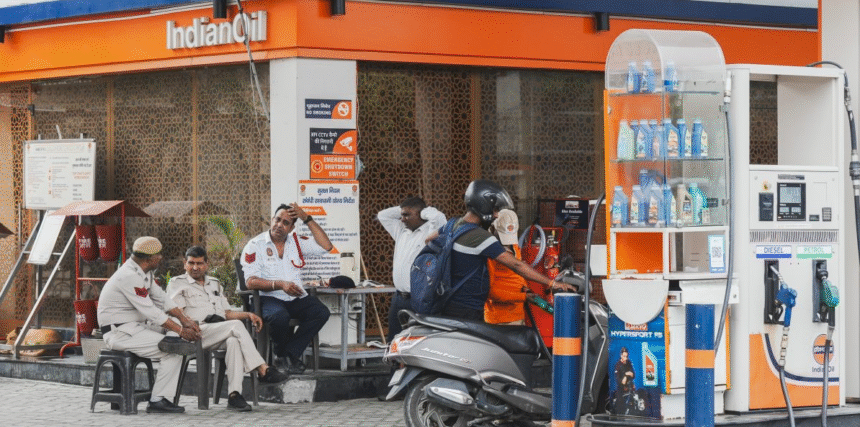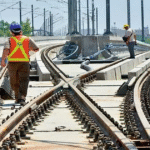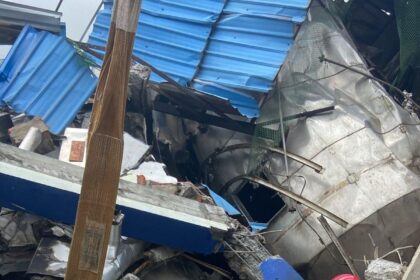Fuel Ban for End-of-Life Vehicles in India Now Effective from November 1
Fuel ban for end-of-life vehicles in India will now be effective from November 1, as authorities extend the deadline to enforce the new environmental regulation nationwide.
Part 1: Introduction — Fuel Ban Policy Postponement and its Broader Context
On July 8, 2025, the Commission for Air Quality Management (CAQM) officially announced the postponement of its earlier directive to deny fuel to end-of-life vehicles in Delhi and select districts of the National Capital Region (NCR). Initially slated for implementation on July 1, the new regulation will now take effect from November 1, 2025, in Delhi and five high-vehicle-density districts—Gurugram, Faridabad, Ghaziabad, Gautam Budh Nagar, and Sonipat. The remainder of NCR will fall under the purview of the ban from April 2026.
This delay reflects a dynamic interplay between regulatory ambition, infrastructural readiness, technological implementation, and public sentiment. While the core objective of the ban is to curtail vehicular emissions and improve Delhi’s notoriously hazardous air quality, the logistical challenges faced in deploying automatic vehicle detection systems prompted authorities to reconsider the timeline.
Understanding End-of-Life Vehicles (ELVs)
End-of-life vehicles, as per Indian regulatory definitions, include diesel vehicles over 10 years old and petrol vehicles over 15 years old. These vehicles are often high polluters due to outdated emission technologies, poor maintenance, and prolonged use beyond their recommended operational lifespan. Their continued presence on Indian roads—particularly in metropolitan hubs like Delhi—poses a significant obstacle to improving urban air quality.
In line with the Supreme Court’s 2018 ruling, these vehicles are technically banned from operating in Delhi. However, enforcement challenges and infrastructural inadequacies have allowed over six million ELVs to continue operating in defiance of the ruling.
Timeline and Regulatory Evolution
The CAQM’s July 8 notification marks a pivotal update in India’s regulatory journey toward combating vehicular pollution. When the commission first introduced the idea of a fuel ban for ELVs in early 2024, it was lauded by environmentalists but met with apprehension by the public and transportation industry stakeholders.
The Initial Rollout Plan
Originally, the commission aimed to deny fuel to ELVs from July 1, 2025. Fuel stations would be equipped with ANPR (Automatic Number Plate Recognition) systems capable of detecting ELVs and refusing service. However, technical setbacks and integration issues led to an urgent reconsideration.
Delay Justification
According to an official letter from the Delhi government to the CAQM dated July 3, 2025, the ANPR systems deployed at fueling stations were still not operating with the necessary robustness. Problems included:
- Sensor malfunctions and unreliable speaker systems
- Improper camera placement
- Incomplete integration with ELV databases across NCR states
- Failure to detect ELVs lacking High-Security Registration Plates (HSRP)
Based on this feedback and mounting public pressure, the CAQM amended the policy implementation schedule, providing additional months to correct these shortcomings.
Implementation Phases
The updated rollout schedule is as follows:
- Phase 1 (November 1, 2025): Enforcement in Delhi + five high-density NCR districts
- Phase 2 (April 2026): Enforcement in the rest of NCR
The goal is to achieve “simultaneous enforcement” through a unified, integrated digital framework supported by high-tech detection infrastructure.
Part 3: The Public Health Imperative — Why the Fuel Ban Matters
Delhi has consistently ranked among the most polluted cities globally, with vehicular emissions being a primary contributor to the capital’s declining air quality. The urgency of implementing stricter regulations, such as the denial of fuel to ELVs, stems from mounting scientific evidence linking air pollution to severe health outcomes.
Global Rankings and Air Quality Metrics
According to the Global Air Pollution Report 2024, issued by Swiss air technology firm IQAir, Delhi is now the second most polluted city in the world. The report noted a 6% increase in PM2.5 concentrations from 2023 to 2024, with average levels exceeding 21 times the World Health Organization’s safe limits.
Health Impacts of Vehicular Emissions
Medical studies have long established a direct correlation between long-term exposure to fine particulate matter (PM2.5 and PM10) and respiratory diseases such as asthma, chronic bronchitis, and lung cancer. Children and the elderly are especially vulnerable. Furthermore, toxic vehicular emissions exacerbate cardiovascular disorders and have been linked to developmental issues in children.
Two-Wheelers — The Silent Polluters
An often-overlooked segment in the air pollution discourse is the two-wheeler category. With over 70% of all vehicles in Delhi being two-wheelers, their cumulative impact on air quality is profound.
Dr. Anju Goel, a senior scientist at The Energy and Resources Institute (TERI), highlights that two-wheelers alone contribute up to 25% of Delhi’s air pollution. Many of these still operate using outdated BS-III emission technology, despite stricter norms being introduced for newer vehicles.
Unlike commercial vehicles, which often undergo mandatory fitness tests, two-wheelers typically escape regulatory scrutiny unless involved in traffic violations or accidents. This loophole allows vast numbers of aging, poorly maintained bikes to remain on the road unchecked.
The Importance of Advanced Vehicle Testing Centres
One of the most critical components in enforcing emission standards is the availability of high-tech vehicle testing centres. Unfortunately, Delhi and the broader NCR lack sufficient infrastructure in this domain.
Only a handful of facilities, such as the Manesar testing centre, employ state-of-the-art emission diagnostic tools capable of measuring vehicle fitness based on emission levels, engine efficiency, and safety parameters. The majority of testing centres across NCR still rely on outdated technology that lacks the precision to evaluate modern pollution metrics.
Dr. Goel stresses that without adequate testing centres, phasing out ELVs may disproportionately affect the poor, turning it into an equity issue. Many families continue using older vehicles not out of choice but due to economic constraints. Penalising them without providing affordable testing and upgrade alternatives risks deepening social inequalities.
Age vs. Fitness — Redefining ELVs
The current classification of ELVs is purely age-based: 10 years for diesel and 15 years for petrol vehicles. While this framework simplifies enforcement, experts argue it lacks nuance.
Dr. Goel advocates a fitness-based assessment approach rather than one rooted in vehicle age alone. “Not all 15-year-old vehicles are polluting, just as not all 5-year-old ones are clean,” she points out. Roadworthiness, maintenance records, and actual emission output should be integrated into policy.
A hybrid model could combine age thresholds with emission test results to determine eligibility for continued operation. Such an approach would also reduce unnecessary scrapping, thereby minimizing waste.
Waste Management Challenges from ELV Disposal
Enforcing a mass fuel ban without a clear ELV disposal plan may result in an unprecedented surge of vehicular waste. Scrapped vehicles must be processed through environmentally sound methods to prevent new forms of pollution.
Delhi already faces logistical limitations in terms of ELV scrapyards and recycling infrastructure. Many small garages and unregulated units operate informally, often leading to improper disposal of hazardous materials such as engine oil, lead-acid batteries, and plastic components.
Authorities must expand authorized scrapyards, create digital scrappage tracking systems, and enforce Extended Producer Responsibility (EPR) norms to manage the post-ban waste stream effectively.
Equity Considerations and the Need for Subsidies
Experts caution that policies targeting ELVs must avoid becoming punitive for economically weaker populations. Many of the affected vehicle owners are small business operators, gig workers, or middle-income families.
Policy Recommendations:
- Subsidies on road taxes for well-maintained older vehicles
- Scrappage certificates that can be traded or offset against the purchase of newer vehicles
- Interest-free loans for retrofitting pollution-control devices or upgrading to compliant models
These mechanisms would encourage public participation, reduce resistance, and prevent economic exclusion.
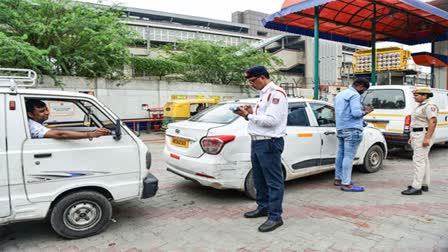
Market-Based Incentives — A Win-Win Model
Goel and other analysts recommend market-driven schemes to complement the fuel ban. One model under discussion is a scrappage certificate trading system, where vehicle owners who scrap their ELVs earn credits that can be sold to buyers of new vehicles.
This approach not only incentivizes compliance but also creates a circular economy around sustainable vehicle use. Similar models have been implemented successfully in parts of Europe and Japan, offering useful templates for India’s policymakers.
Such innovations could turn what is currently perceived as a regulatory burden into an opportunity for economic and environmental gain.
The Road Ahead — From Compliance to Transformation
The decision to delay the fuel ban underscores the need for comprehensive, system-wide readiness. Beyond technological fixes, the transition toward cleaner urban mobility requires coordination among multiple stakeholders — government, civil society, automotive manufacturers, environmentalists, and most importantly, vehicle users.
Key to this transformation is public trust. Clear communication, equitable enforcement, accessible testing facilities, and robust recycling pathways will determine the success or failure of the fuel denial policy.
Ultimately, the fuel ban is not just a regulatory milestone. It is a test case for India’s ability to reconcile developmental aspirations with environmental stewardship — a microcosm of the country’s larger battle against climate change.
Part 11: Global Case Studies — Learning from International Experience
To strengthen the implementation of the fuel ban on end-of-life vehicles, Indian policymakers can draw from a range of international precedents. Countries like Japan, Germany, and the Netherlands have implemented comprehensive ELV policies that combine regulation, incentive structures, and waste management systems.
In Japan, the End-of-Life Vehicle Recycling Law requires manufacturers to recover and recycle key vehicle components, including airbags, Freon, and shredder residue. Consumers pay a recycling fee at the time of vehicle purchase, building a fund to manage vehicle disposal.
Germany’s Circular Economy Act mandates that 95% of vehicle material by weight must be recovered or reused. The government also invests in reverse logistics to ensure seamless collection and dismantling of ELVs.
India’s proposed model must not only consider these frameworks but tailor them to suit local infrastructural constraints, socio-economic diversity, and enforcement capacities.
Implementation at the Local Level — District-Level Preparedness
Each of the five high-vehicle-density districts targeted in Phase 1—Gurugram, Faridabad, Ghaziabad, Gautam Budh Nagar, and Sonipat—faces unique logistical and demographic challenges.
Gurugram and Faridabad
Both cities are major urban hubs in Haryana and are densely populated with private vehicles, corporate fleets, and delivery bikes. Despite decent infrastructure, their enforcement capabilities will depend on collaboration between district transport authorities, fuel retailers, and Resident Welfare Associations (RWAs).
Ghaziabad and Gautam Budh Nagar
These districts serve as key gateways into Delhi and see heavy vehicular traffic, including commercial trucks and long-haul transporters. Fuel stations along expressways will require enhanced surveillance and ANPR system deployment.
Sonipat
Primarily semi-urban, Sonipat’s challenge lies in mobilizing awareness and ensuring that rural pockets and small towns are not left out of compliance frameworks.
Technology Infrastructure — Strengthening ANPR Systems
The Automatic Number Plate Recognition (ANPR) system forms the backbone of the fuel denial enforcement strategy. Yet, the July 3 letter from Delhi’s transport department highlighted severe limitations in the system’s rollout.
To address these gaps, authorities must:
- Calibrate camera placements to cover different vehicle heights and angles
- Improve sensor sensitivity and speaker coordination
- Integrate HSRP and legacy number plate databases
- Link live fuel station feeds with centralized ELV registries
Experts also recommend hybrid verification systems that combine ANPR data with human validation during the transition period.
Voices from the Ground — Fuel Retailers and Station Owners
Fuel station owners are critical stakeholders in enforcing the fuel ban. However, their preparedness varies widely depending on location, ownership model (corporate vs independent), and access to technology.
Interviews with station operators in South Delhi and Ghaziabad reveal:
- Uncertainty over operational responsibilities and legal liabilities
- Concerns about consumer backlash and traffic disruptions
- Requests for training, government support, and financial assistance for tech upgrades
Many are willing to comply but require clarity on enforcement protocols and assurance that confrontations with customers will not lead to legal or reputational risks.
Voices from the Ground — Commuters and Commercial Drivers
Private vehicle owners and commercial drivers express a mix of support and anxiety regarding the fuel ban. While many acknowledge the environmental need, they also highlight the lack of clear communication and support mechanisms.
Concerns Raised:
- Fear of sudden fuel denial without prior notice
- Inability to afford vehicle replacement or retrofitting
- Insufficient awareness about eligibility or exemption status
Taxi associations in Gurugram and bike delivery networks in Noida have requested targeted briefings and extension of scrappage incentives to commercial segments.
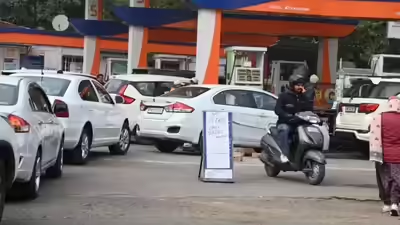
Early Indicators from Pilot Projects
Before the full-scale rollout, some fuel stations in Delhi and Gurugram piloted ANPR-based denial mechanisms in collaboration with the Delhi Transport Department. The data from these trials offer valuable lessons:
Key Findings:
- Error rates of 12–18% due to misread plates and false positives
- Significant drop in footfall at participating fuel stations during trial weeks
- Increased complaints from legitimate vehicle owners denied fuel
The trials emphasize the need for a robust grievance redressal mechanism, preferably app-based, that allows vehicle owners to challenge fuel denial decisions in real time.
Role of the Automotive Industry
The automotive industry—particularly OEMs (Original Equipment Manufacturers), component suppliers, and authorized service centres—has a pivotal role to play in facilitating the transition.
Suggestions include:
- Offering trade-in discounts on new, compliant vehicles
- Launching scrappage-linked exchange schemes
- Providing emissions upgrades and certifications through authorized workshops
Industry collaboration will reduce friction, promote responsible end-of-life vehicle handling, and speed up fleet modernization.
Environmental Impact Projections
Modelling studies by TERI and the Centre for Science and Environment (CSE) project that the removal of ELVs from Delhi and the NCR could reduce PM2.5 levels by 15–20% in high-traffic corridors within the first year.
Carbon monoxide and nitrogen oxide concentrations are also expected to drop significantly, particularly near major intersections, school zones, and residential colonies situated near arterial roads.
These improvements would not only benefit public health but also enhance the quality of life and contribute toward India’s National Clean Air Programme (NCAP) targets.
Legal Framework and Judicial Oversight
The ban on end-of-life vehicles is not a standalone policy—it is grounded in judicial directives, most notably the 2018 Supreme Court ruling that prohibited 10+ year diesel and 15+ year petrol vehicles from operating in Delhi.
The National Green Tribunal (NGT) and Delhi High Court have also issued multiple orders mandating stricter enforcement of vehicular pollution norms. These legal backings lend strength to the current CAQM-led initiative, but they also place a duty on enforcement agencies to ensure that rights-based concerns are respected.
Any future litigation around wrongful denial of fuel or vehicle confiscation will likely be measured against this jurisprudential backdrop.
The Path Forward — Building Public Consensus
No environmental policy can succeed without broad-based public participation. The success of the fuel ban hinges on the ability of the government, civil society, and industry to align messaging, support systems, and enforcement.
Key steps for consensus-building include:
- Transparent, multilingual communication campaigns
- Engaging RWAs, schools, market associations, and religious institutions
- Creating helplines and digital portals for real-time support
Delhi’s air quality crisis is a shared burden, and overcoming it requires collective action rooted in trust, equity, and innovation.
Role of Municipal Corporations and Urban Governance
Municipal corporations in Delhi and the NCR districts will be crucial in the localized enforcement of the fuel ban on end-of-life vehicles. These bodies, which are already responsible for urban infrastructure, parking regulations, and waste disposal, are now being tasked with coordinating between multiple layers of governance—from ward officers to central regulators.
Key interventions by municipal corporations may include:
- Identifying ELV hotspots through geo-mapping and traffic analysis
- Assisting in setting up and managing digital signage at fuel stations
- Coordinating with Resident Welfare Associations (RWAs) to disseminate official notifications
- Setting up local grievance redressal booths in public spaces
Resident Welfare Associations and Community-Level Implementation
RWAs across Delhi and the NCR are emerging as powerful community-level partners in implementing the new fuel ban. These associations manage gated colonies, housing complexes, and apartment societies that collectively house a significant portion of the capital region’s population.
Proactive RWAs can play a pivotal role in:
- Educating residents on ELV rules through meetings, newsletters, and WhatsApp groups
- Organizing vehicle fitness camps in collaboration with transport departments
- Reporting non-compliance and facilitating community policing
Case studies from Vasant Kunj in Delhi and Sector 51 in Noida show that RWA-led initiatives have already improved road safety and compliance with fire, parking, and garbage norms. Their role in ELV enforcement could become a model of participatory governance.
Innovations in ELV Waste Management
With millions of vehicles expected to be phased out, Delhi-NCR faces a waste management challenge of unprecedented scale. However, this also offers an opportunity for the region to become a pioneer in sustainable automotive waste recycling.
Innovations include:
- Public-private partnerships to set up automated scrapping facilities
- Urban mining techniques to extract rare earth metals and reusable components
- AI-based tracking of ELV parts to ensure safe dismantling and non-contamination
Companies like Maruti Suzuki and Tata Motors have already started investing in registered scrappage centres that offer certificates linked to new vehicle purchases.
Public Sentiment and Media Narratives
Media coverage of the fuel ban decision has been mixed, with editorials praising its ambition while pointing out execution flaws. Social media sentiment analysis reveals five dominant reactions:
- Supportive Environmentalism: Applauding action on air pollution
- Technological Skepticism: Doubting ANPR readiness
- Economic Anxiety: Concern from low-income vehicle owners
- Policy Confusion: Complaints about lack of awareness
- Compliance Enthusiasm: Willingness to comply if incentives are clarified
Mainstream outlets like NDTV and Hindustan Times have emphasized the public health benefits, while independent media platforms are highlighting ground-level concerns and exclusion risks.
Education and Awareness — Reaching the Next Generation
Sustainable air quality initiatives must also include long-term awareness-building among children and youth. Schools and colleges are ideal platforms to instill values of environmental stewardship.
The Delhi government, in collaboration with NGOs, has launched:
- Air quality curriculum modules for Class 6–10
- Youth ambassador programs where students monitor and report vehicle emissions in their neighborhoods
- Online quizzes and poster competitions to promote cleaner transport
These steps aim to shift cultural norms around vehicle ownership and emission responsibility.
Mid-Term Review and Performance Monitoring
To ensure that the fuel ban policy stays on track, the CAQM will conduct a mid-term review in February 2026, five months after the November launch in Delhi and five NCR districts. This review will assess:
- ANPR error rates
- Number of ELVs flagged and denied fuel
- Feedback from fuel stations, police, and citizens
- Grievance redressal performance
Recommendations from the review will feed into the April 2026 expansion to the rest of NCR.
The CAQM has also proposed quarterly policy audits, citizen feedback surveys, and third-party verification reports to enhance transparency and credibility.
Role of State Transport Departments
State transport departments in Haryana, Uttar Pradesh, and Delhi are the main custodians of vehicle registration, fitness certification, and database management. Their cooperation is essential to ensure a synchronized response.
Steps taken so far:
- Data-sharing agreements to unify ELV lists
- Upgrading legacy databases to cloud-based platforms
- Standardization of HSRP records across states
These efforts aim to eliminate jurisdictional loopholes that ELV owners might exploit when refueling in border areas.
Private Sector Involvement and Corporate Social Responsibility
Large logistics and fleet operators are responding to the ELV policy with proactive fleet renewal programs. E-commerce companies such as Amazon and Flipkart have begun shifting their intra-city operations to EVs and newer BS-VI-compliant diesel trucks.
Corporate Social Responsibility (CSR) funds are also being redirected toward:
- Setting up mobile emission testing vans
- Sponsoring scrappage of commercial ELVs
- Running awareness campaigns in high-pollution zones
These actions demonstrate how businesses can align profitability with public interest.
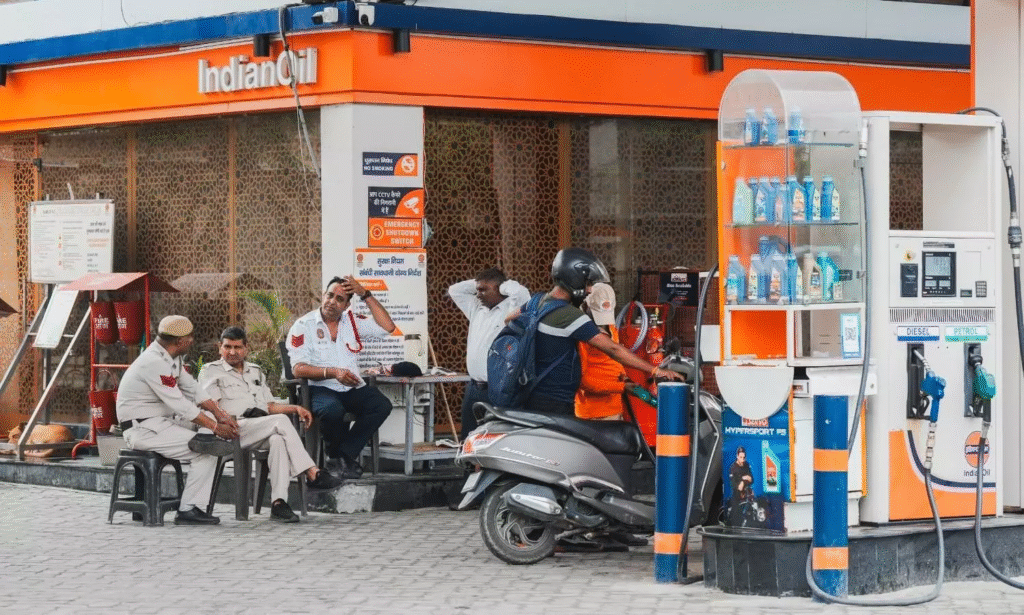
Long-Term Climate Benefits
While the immediate aim of the ELV fuel ban is local air quality improvement, its long-term benefits extend to India’s climate change commitments.
Reduced vehicle emissions contribute directly to:
- Lower urban heat island effects
- Reduced black carbon emissions
- Improved carbon sink performance in city green belts
These align with India’s targets under the Paris Agreement and the Nationally Determined Contributions (NDCs). Cleaner cities also attract international green investment and unlock funding through mechanisms like the Green Climate Fund.
Reimagining Urban Mobility — Beyond the Fuel Ban
The fuel ban on end-of-life vehicles is a gateway reform. Experts believe it should be followed by a broader transformation in urban mobility that includes:
- Expansion of electric and hybrid public transport fleets
- Dedicated lanes for bicycles and e-scooters
- Mandatory parking permits for new vehicle purchases
- Congestion pricing and low-emission zones (LEZs)
The goal is to shift the paradigm from ownership to access, from emission-heavy personal vehicles to shared, sustainable, and affordable mobility.
The story of Delhi and NCR’s fuel ban is not just about what is being phased out—it’s also about what is being made possible.


